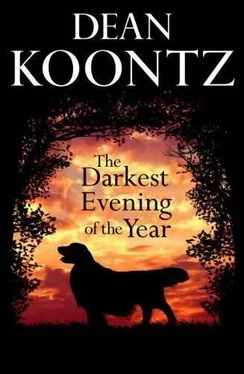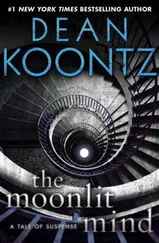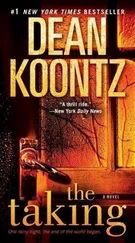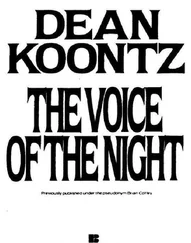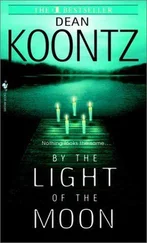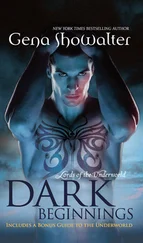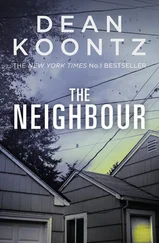Although he had put a slantboard under the art-paper tablet, his fingers should have ached, and his hand should have cramped. He had been at this for at least five hours, with intense focus.
As if the laws of physics and physiology had been suspended, he suffered no stiffness in his hand, no slightest pain. The longer he drew, the more fluidly the images appeared upon the paper.
The eyes of the dog…Brian stopped drawing the surrounding facial structures, yielding to a fascination with just the glistening curves from lid to lid, from inner to outer canthus, the mysterious play of light upon and within the cornea, iris, lens, and pupil.
In each new drawing, the quality of the incoming light was different from that in previous renditions, was received by the eyes at different angles, obliquely and directly.
Out of his pencil flowed larger and still larger eyes, in pairs, filling the entire page.
Then he began rendering one eye per page, enlarging the scale for a more detailed study of the patterns of intraocular radiance.
When next he glanced at the clock, he was unnerved to discover that an hour and a half had passed since he had heard his small staff coming to work downstairs. Yet he did not put down the pencil.
Although the elliptical perimeter of an eye still framed the subject, though the iris and the pupil could still be discerned, enigmas of light and shadow began to dominate each composition to such an extent that the drawings became almost abstract.
Soon Brian began to see hieroglyphics in these soft yet complex patterns, strange symbols that blazed with meaning when glimpsed from the corner of an eye. They faded into gray haze or diffused into luminous mists when he attempted to look at them directly.
Even as meaning eluded him, he grew convinced that whatever the source of these images, whether they came from his intuition or were the work of a phantom presence that guided his hand, they contained a hidden truth and were leading him toward a shattering revelation.
He tore off another page, put it aside. He had used at least a third of the tablet. Drawings layered the table.
Only after his hand had worked for a while on the clean page did he realize that he was being led into a still deeper exploration of the dog’s mesmerizing gaze. Instead of merely portraying the beauty of the dusky yet luminous canine eyes as they appeared from without, Brian’s busy pencil took him within that architecture of shade and sheen, not into the substance of the eyeball itself, but inside the warp and woof of shadow and light within cornea, iris, pupil, lens.
This was a vision of which he, as an artist, could never have conceived. The eye as a recognizable subject disappeared from the page, leaving only the incoming luminous rays and the companion shadows as they traveled through the processing layers of the eye. The drawing became entirely abstract, yet achingly more beautiful, numinous. Here was genius at work, and Brian knew he was no genius.
He had passed into an altered state of consciousness, into a trance of delight.
At times he swore that he saw the point of the working pencil pass through the paper without puncturing it, laying down its graphite beyond the page, as if constructing an image down, down, down through an infinite number of surfaces.
Any good artist can create the illusion of three dimensions; but as these many-petaled patterns were refined, they blossomed toward him and simultaneously invited him to fall away within them. His pencil seemed to be a key to dimensions beyond a third.
The meaningful hieroglyphics that earlier he’d glimpsed embedded in the drawing began to glow again in his imagination if not in fact, brighter than they had been previously. Then, as the drawing appeared to flower toward him, he became aware of some secret at its center, a shimmering amazement that might ultimately be beyond understanding, that could never be adequately drawn, yet his pencil worked, worked-
Through the room swept a sound so terrible that Brian flung down the pencil and thrust to his feet, knocking over the chair.
Not a simple sound but many noises simultaneously: hiss, whizz, soft clicking, rustle and flump, deep throb and ruffle, crumpcrump-crumpcrump . Loud, but not a blast. Not heavy like the hard crash of thunder, but heavy like the subsequent roll.
He felt as if he had been folded into the sound-as if it were a great blanket-folded into it and shaken out, folded in, shaken out.
Concussion waves thrummed in his ear drums, quivered through his teeth, traveled the hollows of his bones.
Sudden silence surprised him. The alarming resonance had seemed as if it would escalate and endure until everything in sight had been shaken apart, like the voice of an earthquake speaking deep within the breaking earth, but it lasted only three or four seconds.
For a moment he was paralyzed, throat tight, waiting for the phenomenon to repeat.
After a hush had held the kitchen for half a minute, Brian went to the window and peered out, half expecting to see a column of smoke rising in the distance, evidence of an explosion. The sky was clear.
The attraction of the unfinished image on the art paper remained powerful. His perception of a pending revelation returned.
He set the fallen chair upright and settled at the table once more. He picked up the pencil.
As his hand moved and the pencil point whispered against paper, further detailing the abstract image, the sound came again, but not loud this time. With rustle and flutter, something approached in the kitchen behind him.
After play, the dogs happily lapped at the large water bowls lined up just outside the kennel, in the shade of the enormous oak.
A come command brought Fred, Ethel, Nickie, and Hugo back to the blanket on which Amy sat with Renata.
The six breeder dogs settled on the lawn at a distance, as they had been before the games. They trusted other dogs implicitly, but they were still wary of people, even of those who had rescued them.
After a while, Renata opened a bag of wheat-free cookies. She gave treats to Ethel and Hugo, while Amy rewarded Nickie and Fred.
The prospect of cookies brought the six ghost dogs to their feet. They approached hesitantly, tails swishing.
Amy’s kids made her proud as they eased away-albeit somewhat reluctantly-to allow the newcomers to receive treats.
Gently, with lips and tongue, the breeder dogs finessed the cookies from Amy’s fingers. She felt not the slightest contact with a tooth, and none of the six tried to snatch away the bag of goodies.
“Ever been bitten by a puppy-mill breeder?” Amy asked Renata.
“Nope. They come here covered in sores, some half-blind from untreated eye infections, spent their lives in cages hardly bigger than them, never knew a human being wasn’t a greedy hateful bastard, never knew a gentle touch or any kindness. They ought to savage us. But they have the softest mouths, don’t they? The gentlest hearts.”
Some nights, Amy lay sleepless, unable to stop thinking about the hell of some dogs’ lives, feeling angry and helpless.
Most puppy farms had ten or twenty breeder dogs, but some big operators kept a thousand or more in cruel conditions. These animals did not truly live, merely existed, and in perpetual black despair.
Their litters had a hope of a real life, but not the breeders. And because mill owners had no interest in maintaining the quality and improving the genetics of the breed, many of the puppies would suffer diseases and joint conditions that would shorten their lives.
Responsible pet stores like Petco and PetSmart had adoption programs for homeless dogs, but didn’t sell puppies.
Other stores, Internet merchants, and newspaper advertisers who claimed to have puppies from small breeders and loving farm families were usually selling animals produced by brutalized breeder dogs.
Читать дальше
Конец ознакомительного отрывка
Купить книгу
